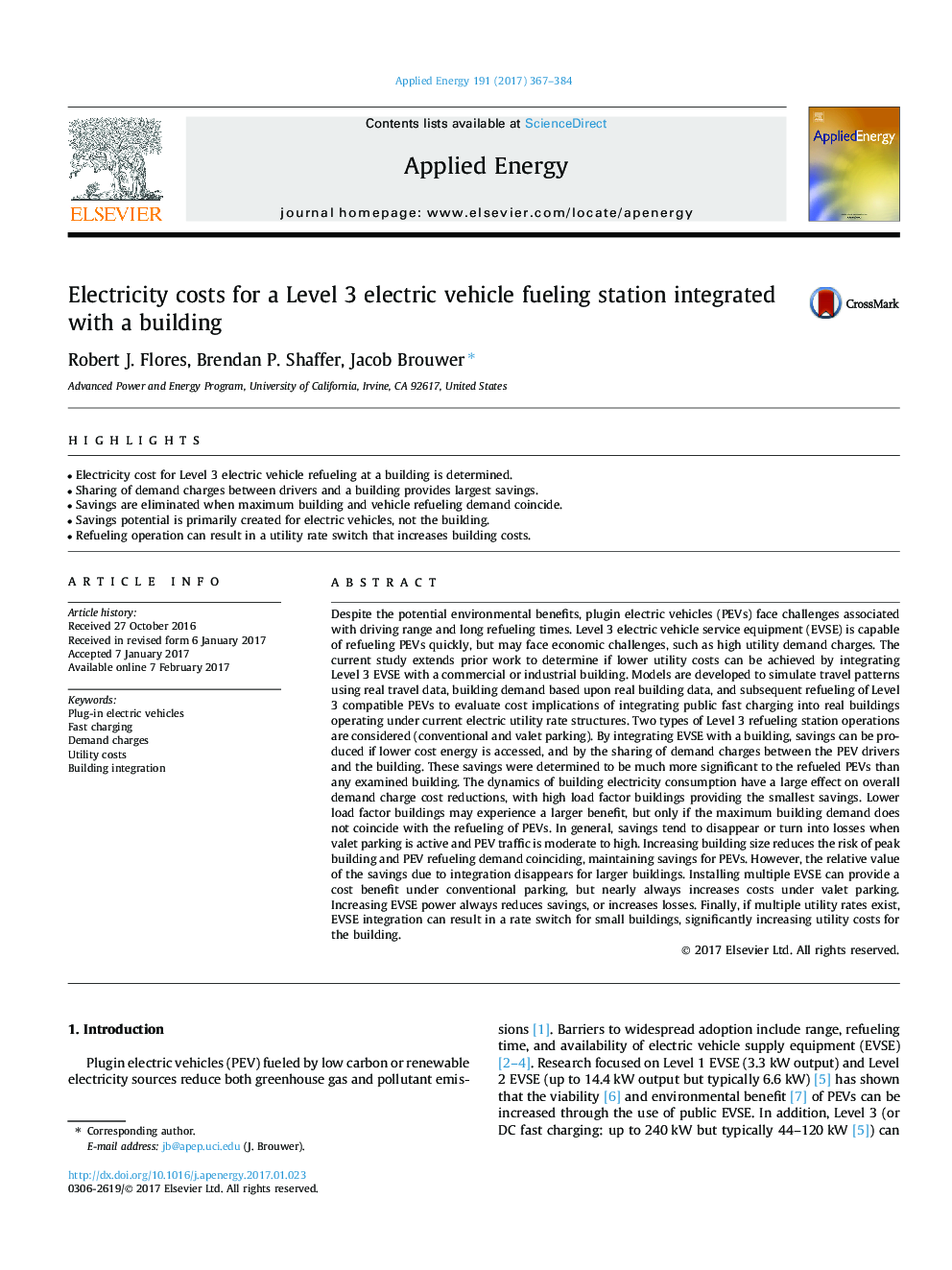| Article ID | Journal | Published Year | Pages | File Type |
|---|---|---|---|---|
| 6478761 | Applied Energy | 2017 | 18 Pages |
â¢Electricity cost for Level 3 electric vehicle refueling at a building is determined.â¢Sharing of demand charges between drivers and a building provides largest savings.â¢Savings are eliminated when maximum building and vehicle refueling demand coincide.â¢Savings potential is primarily created for electric vehicles, not the building.â¢Refueling operation can result in a utility rate switch that increases building costs.
Despite the potential environmental benefits, plugin electric vehicles (PEVs) face challenges associated with driving range and long refueling times. Level 3 electric vehicle service equipment (EVSE) is capable of refueling PEVs quickly, but may face economic challenges, such as high utility demand charges. The current study extends prior work to determine if lower utility costs can be achieved by integrating Level 3 EVSE with a commercial or industrial building. Models are developed to simulate travel patterns using real travel data, building demand based upon real building data, and subsequent refueling of Level 3 compatible PEVs to evaluate cost implications of integrating public fast charging into real buildings operating under current electric utility rate structures. Two types of Level 3 refueling station operations are considered (conventional and valet parking). By integrating EVSE with a building, savings can be produced if lower cost energy is accessed, and by the sharing of demand charges between the PEV drivers and the building. These savings were determined to be much more significant to the refueled PEVs than any examined building. The dynamics of building electricity consumption have a large effect on overall demand charge cost reductions, with high load factor buildings providing the smallest savings. Lower load factor buildings may experience a larger benefit, but only if the maximum building demand does not coincide with the refueling of PEVs. In general, savings tend to disappear or turn into losses when valet parking is active and PEV traffic is moderate to high. Increasing building size reduces the risk of peak building and PEV refueling demand coinciding, maintaining savings for PEVs. However, the relative value of the savings due to integration disappears for larger buildings. Installing multiple EVSE can provide a cost benefit under conventional parking, but nearly always increases costs under valet parking. Increasing EVSE power always reduces savings, or increases losses. Finally, if multiple utility rates exist, EVSE integration can result in a rate switch for small buildings, significantly increasing utility costs for the building.
